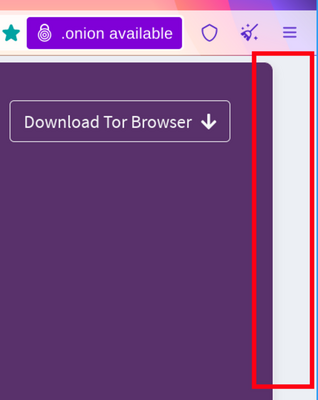Înțelegerea amprentării browser-ului
Amprentarea browser-ului este colectarea sistematică a informațiilor despre browser-ul web pentru a face presupuneri educate despre identitatea sau caracteristicile acestuia.
Fiecare setare si caracteristica modificare intr-un browser creaza o "amprenta a browser-ului".
Majoritatea browserelor creează fără intenție o amprentă unică pentru fiecare utilizator, care poate fi urmărită pe internet.
Pentru informații mai detaliate despre amprentarea browser-ului, consultați aceste articole de pe Tor Blog: Browser Fingerprinting: An Introduction and the Challenges Ahead și Tor Browser: a legacy of advancing private browsing innovation.
De ce amprentarea browser-ului amenință confidențialitatea online?
În primul rând, nu este nevoie să se solicite permisiuni de la utilizator pentru a colecta aceste informații.
Orice script rulând în browser poate crea în tăcere o amprentă a dispozitivului fără ca utilizatorii să fie conștienți de acest lucru.
Second, if one attribute of the browser fingerprint is unique or if the combination of several attributes is unique, the device can be identified and tracked online.
This means that even without cookies, a device can be tracked using its fingerprint.
Cum Tor Browser reduce amprentarea
Tor Browser is specifically engineered to minimize the uniqueness of each user's fingerprint across various metrics.
While it is practically impossible to make all Tor Browser users identical, the goal is to reduce the number of distinguishable "buckets" for each metric.
This approach makes it harder to track individual users effectively.
Unele atribute, ca de exemplu sistemul de operare si limba acestuia sunt necesare pentru functionalitate si nu pot fi ascunse in totalitate sau falsificate.
Instead, Tor Browser limits the variety within these attributes to reduce distinctiveness.
De exemplu, limitează enumerarea fonturilor și aplică înlocuirea caracterelor, standardizează dimensiunile ecranului și ferestrei folosind letterboxing, și restricționează varietatea limbilor solicitate la un set mic și predefinit.
The key goal of Tor Browser's anti-fingerprinting protections is to make it significantly more challenging to gather enough information to uniquely identify users, thereby enhancing privacy without compromising necessary functionality.
Funcții anti-amprentare în browser-ul Tor
Letterboxing
To prevent fingerprinting based on screen dimensions, Tor Browser starts with a content window rounded to a multiple of 200px x 100px.
Aici, strategia este de a plasa toți utilizatorii într-un cuplu de pachete pentru a face mai greu individualizarea lor.
Acest lucru funcționează, până când utilizatorii încep să-și redimensioneze fereastra (de exemplu, maximizând-o sau trecând la modul ecran complet).
Tor Browser este livrat cu o apărare de amprentare pentru aceste scenarii, care se numește Letterboxing, o tehnică dezvoltată de Mozilla și prezentată în 2019.
Funcționează prin adăugarea de margini într-o fereastră a browserului, astfel încât fereastra să fie cât mai aproape de dimensiunea dorită, în timp ce fereastra se află într-un grup de dimensiuni ale ecranului care împiedică extragerea lor cu ajutorul dimensiunilor ecranului.
În cuvinte simple, această tehnică grupază utilizatorii în funcție de dimensiunea ecranului, ceea ce face mai dificil să îi identifici pe baza dimensiunii ecranului, deoarece mulți utilizatori vor avea aceeași dimensiune de ecran.

User-Agent and Operating System spoofing
The User-Agent string is a value websites can use to identify details about your browser, operating system (OS), CPU architecture, vendor, and version.
Since this information can reveal which OS or device a user is using, it has been a vector for browser fingerprinting, allowing websites or trackers to potentially single out users.
Tor Browser addresses this by spoofing the User-Agent. Users cannot choose a specific operating system or attempt to imitate every possible platform.
Instead, Tor Browser standardizes User-Agent values to reduce uniqueness and avoid creating a false sense of privacy:
- All Windows appear as Windows 10.
- All macOS appear as OS X 10.15.
- All Android as Android 10.
- All other systems like all Linux distributions (including Tails and Qubes), *BSD and other operating systems are grouped together and reported as "Linux running X11".
- All the other details (such as the architecture) are also normalized per-platform.
In this case, the fingerprint resistance strategy in Tor Browser is to protect real values of the User-Agent by spoofing, but also have a large enough user set.
User-Agent is sent to websites as an HTTP header, and it is available to JavaScript as navigator.userAgent.
Inconsistencies in these values can trigger anti-bot and anti-fraud systems into categorizing Tor users as a bot, and deny their requests, which in turn affects usability for Tor Browser users.
Some privacy tools or users suggest that making all users appear as Windows would offer the best cover.
However, perfectly spoofing across all browser contexts is not possible and active fingerprinting methods (using fonts, features, behavior, with or without JavaScript, etc.) can often be used to infer aspects of the hardware or operating system.
Tor Browser does not let users select which OS they appear to be.
This is intentional: any option to choose would only make users more unique and thus easier to fingerprint.
The small set of standardized options is key to keeping users blended together, maximizing privacy for everyone.
Cum Tor Browser reduce amprenta digital
Pe lângă letterboxing, Tor Browser utilizează multe alte funcționalități pentru a reduce amprentarea browser-ului și a proteja confidențialitatea utilizatorilor.
These features include Canvas image extraction blocking, NoScript integration, and first-party isolation.
Pentru o listă completă de funcționalități, vă rugăm să citiți documentul Tor Browser design and implementation document.